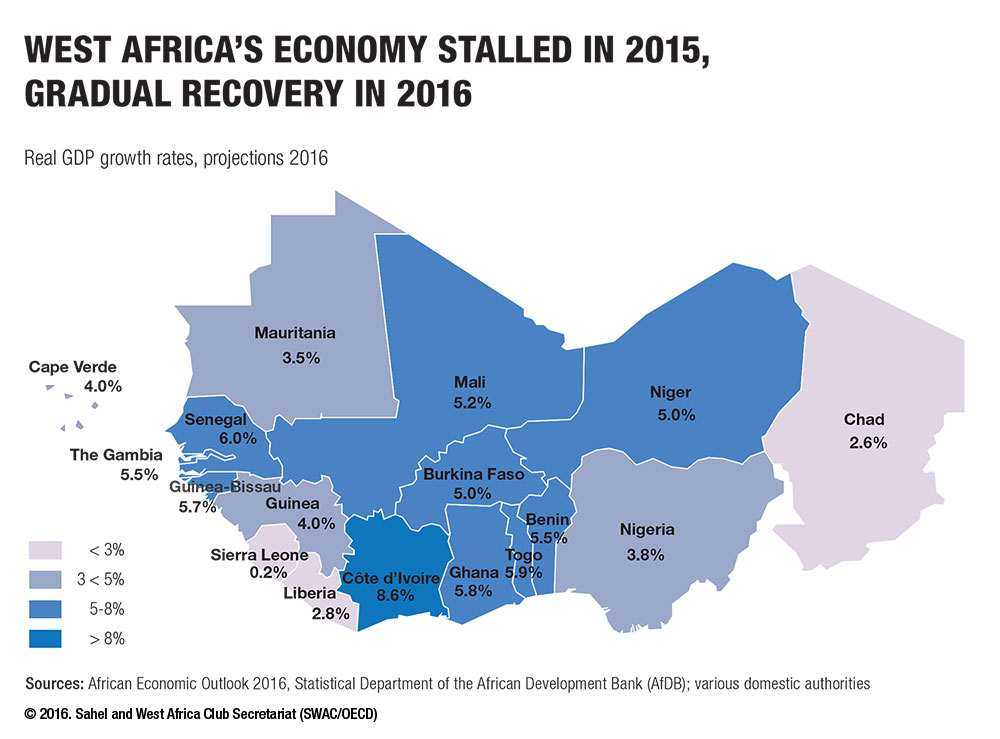Image:

Title:
West Africa's economy stalled in 2015, gradual recovery in 2016
Topics:
SWAC:
Post date:
21/06/2016
The African Economic Outlook 2016 estimates of real GDP growth in 2015 are conclusive for West Africa. For the first time since 2008, the sub-region recorded a growth rate below the continental average (3.7% in 2015). With growth estimated at 3.3%, the West African economy was less dynamic than that of East Africa (6.3%), Central Africa (3.7%) and North Africa (3.5 %), but stronger than that of Southern Africa (2.8%). This performance is mainly due to the economic downturn in Nigeria. The country, whose GDP alone accounts for about 72% of regional GDP, is facing a significant decline in oil revenues due to the price collapse that began in mid-2014. The Ebola outbreak has also weakened the economies of Guinea, Liberia and Sierra Leone. The developments in West Africa generally reflect continental trends. As elsewhere in Africa, countries whose economies depend on international commodity prices are in trouble due to weakening global demand. In contrast, countries with more diversified economies and well developed agricultural sectors managed to maintain a dynamic trajectory. Côte d’Ivoire and Senegal, where the primary sector is doing well, recorded robust growth of 8.8% and 5.1% respectively in 2015. In the short term, the report forecasts a gradual recovery in economic activity in the region, which is expected to grow 4.3% in 2016 and 5.5% in 2017. This restart will likely be driven by a recovery in infrastructure expenditures. Côte d’Ivoire could become the continent’s most dynamic economy in 2016, with growth of 8.6%.
These maps are without prejudice to the status of or sovereignty over any territory, to the delimitation of international frontiers and boundaries and to the name of any territory, city or area.
We encourage the use of our maps. Please include the Club’s copyright, inform or contact us for specific requests: [email protected]













